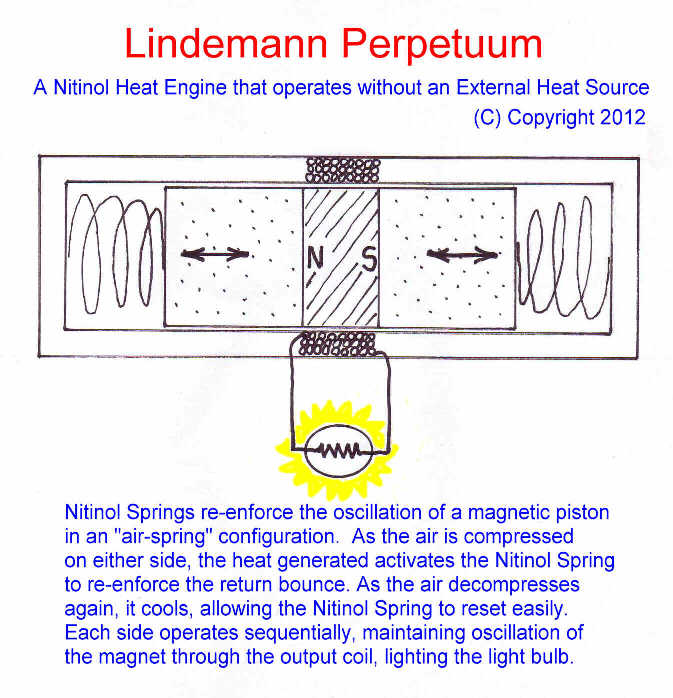At the Beginning
Wonza,
The purpose of my talk, and following it with a thread like this is to get people to THINK about possibilities they had not considered before. In that regard, you are doing exactly the right thing.
The idea for the Lindemann Perpetuum came to me while I was preparing my presentation for the conference. One of the reasons I do these talks is to force me to organize and correlate what I already know into something that can be communicated clearly. So, the answer is "no", I have not had a chance to attempt building one yet.
The drawing should be considered a "conceptual drawing" and not an "engineering design". From what I can see in my mind, your comment about it creating equal forces and therefore the possibility that it won't work is valid. I have seen this also. The solution that makes operation possible is that there has to be a slight "time delay" between the heating of the air during compression and the heating of the NITINOL springs by that hot air. That creates the "offset" that makes operation possible.
I'm glad you are exercising your creativity with regard to using NITINOL as an energy source. There are other NITINOL threads in this forum where I think your ideas could make a beneficial contribution, leaving this thread more on-topic about my Conference Talk PERPETUAL MOTION REALITY.
Thanks,
Peter
Originally posted by wonza
View Post
The purpose of my talk, and following it with a thread like this is to get people to THINK about possibilities they had not considered before. In that regard, you are doing exactly the right thing.
The idea for the Lindemann Perpetuum came to me while I was preparing my presentation for the conference. One of the reasons I do these talks is to force me to organize and correlate what I already know into something that can be communicated clearly. So, the answer is "no", I have not had a chance to attempt building one yet.
The drawing should be considered a "conceptual drawing" and not an "engineering design". From what I can see in my mind, your comment about it creating equal forces and therefore the possibility that it won't work is valid. I have seen this also. The solution that makes operation possible is that there has to be a slight "time delay" between the heating of the air during compression and the heating of the NITINOL springs by that hot air. That creates the "offset" that makes operation possible.
I'm glad you are exercising your creativity with regard to using NITINOL as an energy source. There are other NITINOL threads in this forum where I think your ideas could make a beneficial contribution, leaving this thread more on-topic about my Conference Talk PERPETUAL MOTION REALITY.
Thanks,
Peter




Comment